Things You Should Know About Metal Roofing in Raleigh, NC
Though asphalt shingles are still the most popular roofing option in North Carolina, metal roofing has become far more popular in recent years.
As we VERY frequently talk about on here, every roof is different, and every roof has its own unique properties that need to be accounted for during a roof repair or replacement.
One of the biggest differences between roofs is the slope, or pitch, of the roof. This is one of the main features that homeowners should be aware of regarding their roof before getting a roof replacement, as the pitch will have a big role in determining how much material is required to replace your roof, and how much your new roof will cost.
Along those lines, if your roof (or a section of it) has a particularly low slope, or pitch, your roofer will likely treat it differently from other roofs because of it. Low slope roofs have to be installed using different materials and methods, which we will be talking about today!
In this blog, you will learn about
Let’s get started!
We touched on this briefly in the beginning, but you really need to have a good understanding of what your roof pitch is, and what it means for your roof.
The pitch of your roof, also known as the slope, is a measurement that indicates how steep the roof is. The way to find this measurement is by placing the level a couple of feet in from the edge of the roof, holding it so that it is level, and measuring from the edge of the level, in towards the roof.
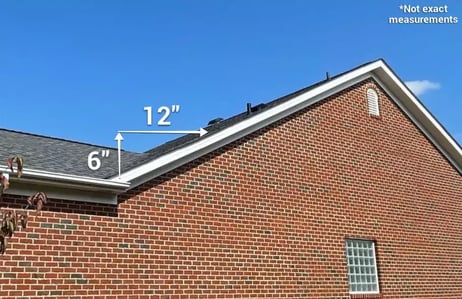
The number of inches you measure there goes into the “__-in-12" format that we use to discuss pitch, using a colon to represent the “in.” So for instance, if you measure 6 inches, you would write the pitch as 6:12.
As for what this means for your roof, a 6:12 roof goes up 6 inches for every 12 inches it goes out. So, if your roof extends a foot over the edge of your house, you can expect it to have risen up 6 inches before the overhang meets your home!
Hopefully that all makes sense, because we’re about to jump into what it means to have a low slope roof!
According to the book, a roof has a low slope when the pitch is below 2:12, so, if your roof rises less than 2 inches every horizontal foot, then it would be considered a low slope roof!
But what difference does this designation actually make? It’s still like any other roof, right?
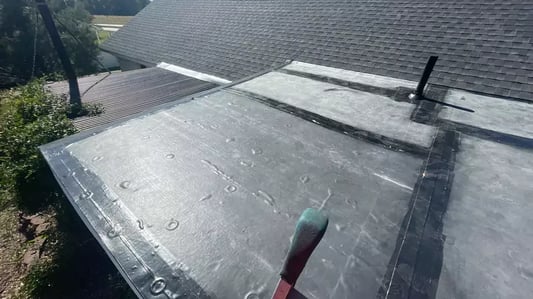
Actually, no! According to manufacturer specifications and building codes, low slope roofs are not steep enough to use asphalt shingles. The reason behind this, is that it takes a much longer time for water to run off of low slope roofs than their steeper counterparts, and as a result, the asphalt shingles would receive a lot more wear and granule loss than they would on a steep slope roof.
So while asphalt shingles may be the right option for most of your roof, if you have a low slope section over a porch, or addition, then you’ll need to find something else to roof over that area.
Let’s talk about some of those other viable options in the next section!
Membrane roofs are the most commonly used roofing material for low slope roofs, whether it’s a commercial shopping center, or a flat section of someone’s home. A big reason behind this is because they are a lot easier to make fit a specific space than the other option we’ll talk about later.
The three main kinds of membrane roofs are: PVC (Polyvinyl chloride), TPO (thermoplastic polyolefin), and EPDM (Ethylene propylene diene monomer).
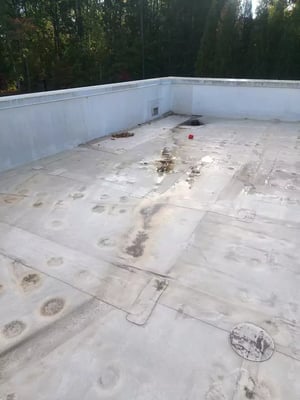
Yup. We all absolutely, definitely know what all that stuff means. No doubt about it.
Basically, they are rolls of synthetic plastic or rubber that can waterproof your roof. The sheets can be different widths, and cut to fit whatever area needs to be covered.
PVC and TPO are usually white, and reflective, which comes in handy when roofing over inhabited spaces that you want to keep cool.
EPDM on the other hand is a black rubber material, which isn’t reflective, but also doesn’t produce the same glare, or commercial look that the others do.
The kind you’ll want really comes down to its purpose. If you need to roof over a room, or somewhere you don’t want getting hot, TPO is probably going to be your choice, but if it’s an area that you’ll be looking at frequently, you may want EPDM. If you’ve got a white car like I do, you know how it looks once something white gets a little bit of dirt on it.
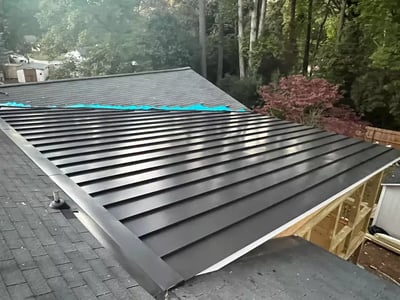
While membranes are pretty much only used for low slope and flat roofs, standing seam metal can be frequently seen for those uses, as well as on steeper sloped roofs.
Standing seam metal roofs are comprised of several panels that lock together at the seams, which are the ridges you can see in the roof. That process allows for the panels to expand and contract as the metal heats and cools. That’s not the case for a screw-down panel roof, a difference that we’ve covered in a different blog.
Screw-down panels, as their name suggests, are screwed down into the frame of the roof. Those screws can start to work themselves out over time as the metal moves, which is why it is not recommended to put these kinds of roofs over heated spaces, especially for low slope roofs, where there is a greater chance of water pooling up.
After reading this article, I hope you’re starting to feel more comfortable and confident in the next steps of your roofing process! If part of your home has a low slope, you should definitely discuss with your roofing company what materials you’d like to put on that section, so you can get a better idea of what they have experiences installing in those areas.
To learn more questions to ask your roofing contractor, check out this blog!
On Tops Roofing has been replacing and repairing all kinds of roofs in the Triangle area of North Carolina since 1991. Having worked on over 15,000 roofs in our time, we’ve got the experience to handle whatever your roofing project requires!
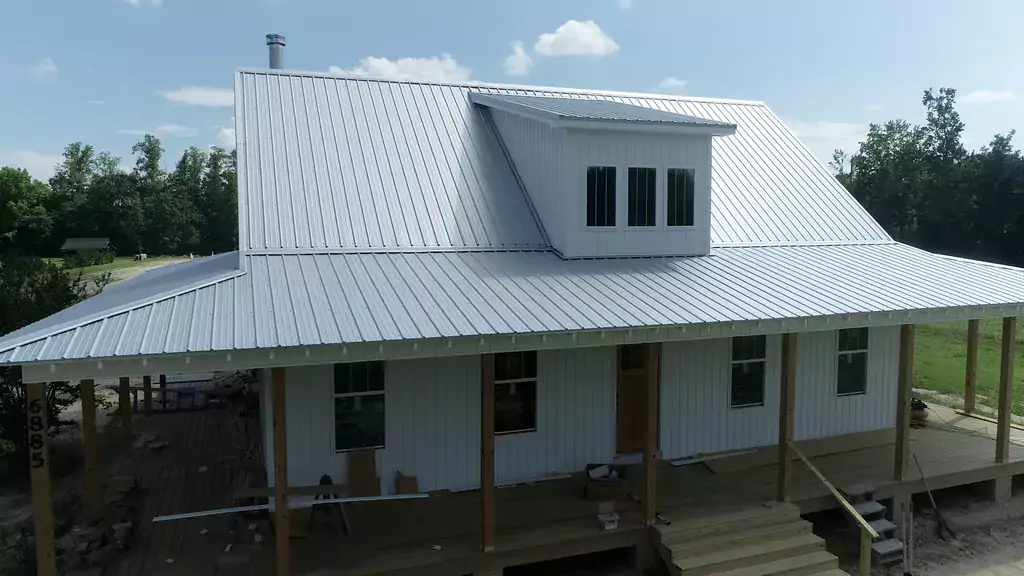
Though asphalt shingles are still the most popular roofing option in North Carolina, metal roofing has become far more popular in recent years.
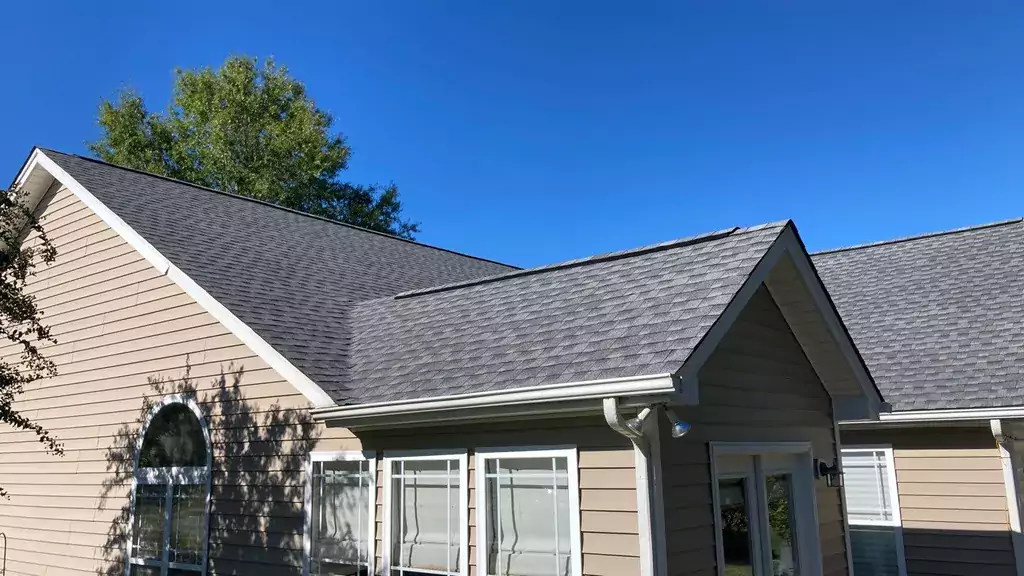
Early in your roofing process, as you’re doing your research to find out what roofing material is the right one for your home, you’re likely coming...
_WebP.webp)
When it comes time for a roof replacement, it can be overwhelming to hear unfamiliar roofing terms casually tossed around like you’re supposed to...